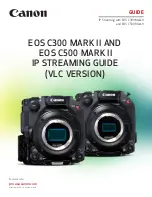
62
ķ
always assured in most photographic situations, including fill-in flash.
Settings on the camera
Set the camera for Green Full Auto Mode, program „P“ or Programmed
Image Control Mode (landscape, portraiture, sport, etc.). Select the „AF“
auto-focus mode on the lens. Please refer to the camera’s operating instruc-
tions for the setting procedure.
Use a tripod for the „Night Shots Program“ to avoid the danger of
camera shake in connection with slow shutter speeds!
Settings on the flash unit
Set the „TTL“ or „E-TTL” mode on the flash unit (see 4.1).
Some cameras automatically switch the flash unit to the TTL mode or
E-TTL mode when the Green Full Auto Mode or Programmed Image
Control Mode is set!
Having completed the above settings, problem-free flash photography can
commence as soon as the flash unit indicates flash readiness (see 5.1).
AUTO Flash
On some cameras it is possible to automatically activate the flash unit
(AUTO-Flash) in certain operating modes. The flash unit will then only fire a
flash if the camera’s internal metering system considers this to be necessary.
For further details please refer to the camera’s operating instructions.
4. Operating modes of the flash unit
4.1 TTL flash mode (Fig. 3)
The TTL flash mode is a very simple way to achieve excellent flash shots. In
this mode exposure readings are taken by a sensor built into the camera,
which measures the light reaching the film through the camera lens. The elec-
tronic control circuit within the camera transmits a stop signal to the flash unit
as soon as the film has been exposed by the correct amount of light, thereby
instantly interrupting the flash. The advantage of this flash mode is that all
factors influencing correct exposure of the film (filters, change of aperture
and focal length with zoom lenses, extensions for close-ups, etc.) are auto-
☞
☞
matically taken into account. You need not worry about the flash, the ca-
mera’s electronic system automatically determines the correct amount of flash
light required. For the maximim flash range please observe the distance
given in the LC display of the flash unit (see 5.4). If flash exposure was cor-
rect, the LC display of the flash unit indicates „o.k.“ for about 3 sec. (see
4.3).
The TTL flash mode is supported by analog Canon AF cameras in all came-
ra modes (e.g. Green Full Auto Mode, Program P, Aperture Priority Mode
„Av“, Shutter Priority Mode „Tv“, Programmed Image Control Modes, Ma-
nual Mode „M“, etc.). Most digital Canon cameras, however, do not support
the standard TTL flash mode. On such cameras, the E-TTL flash mode must
be selected (see 4.1.1).
To test the TTL function a film must be loaded in the camera. When
selecting the film please check whether limits regarding maximum film
speed or ISO value (e.g. maximum ISO 1000) are applicable to the
given camera when in TTL mode (refer to the camera’s operating in-
structions)!
Setting procedure for TTL mode
With some cameras the TTL mode is automatically activated on the
flash unit when in the Green Full Auto Mode or Programmed Image
Control Mode!
• Turn on the flash unit by its main switch.
• Continue depressing the „Mode“ key until „TTL“ flashes on the LC display.
• The setting becomes immediately effective. The LC display returns to its
normal state after approx. 5 sec.
Pronounced differences in contrast, e.g. a dark subject in snow, may make it
necessary to correct the exposure settings (see 4.2).
4.1.1 E-TTL flash mode
E-TTL flash control is an advanced variant of “normal” TTL flash mode. It is
supported by the digital and various analog Canon cameras. In E-TTL mode,
☞
☞







































